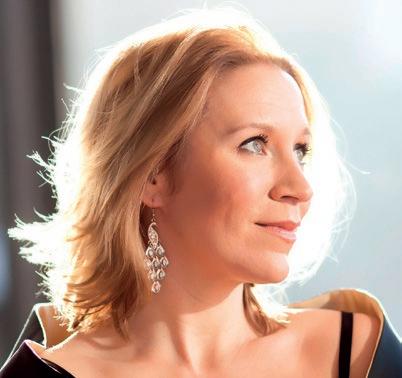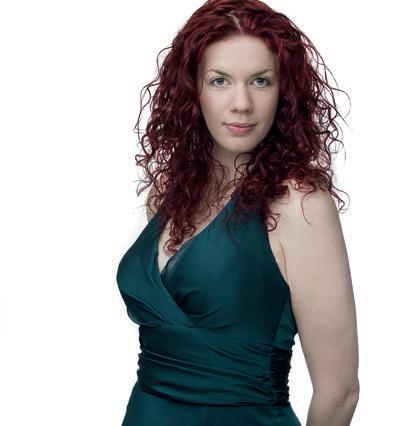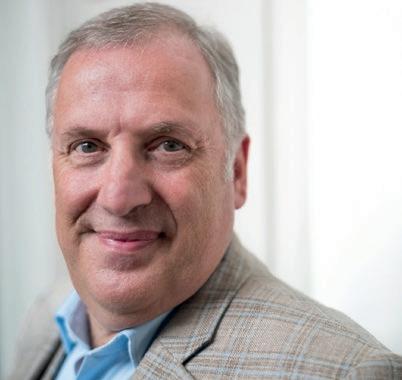The Stations of the Cross in musical form
Bach’s St Matthew Passion remains not only one of the greatest liturgical compositions in terms of scope, but also in terms of artist achievement in the classical music canon. This appreciation is felt throughout the Western world, but it is only in the Netherlands where an annual tradition of performing the work has grown up during Holy Week.
When in 1723 Johann Sebastian Bach was appointed cantor of the Thomaskirche in Leipzig, one of his regular tasks required the performance of cantatas during Sunday services. In addition, this new position offered him the opportunity to compose larger-scale liturgical works for Good Friday, one of the most significant days in the Lutheran calendar. Just a year later, Bach had composed his St John Passion, based on the Gospel of John, interspersed with contemporary passion poems and well-known chorales from various other composers. This would be the prelude to a broader interpretation of the passion of Christ from the Gospel of Matthew, in which Bach would collaborate closely with celebrated local poet Christian Friedrich Henrici, who published his work under the name of Picander. This St Matthew Passion was first performed during Vespers on Good Friday 1727. In musical terms, the work could have passed for an oratorio, but given the long sermon between the two parts and the congregational singing at the
beginning and end of the work, it unmistakably formed part of a religious service. A Good Friday liturgy for which Bach had used all musical devices to make the story of the passion as vivid and direct for the audience as possible. Bach himself considered the ‘große Passion’, as his St Matthew Passion was known in family circles, his greatest masterpiece, which he had imbued with everything musical and theological that filled his heart.
With his St John Passion, Bach had gained experience of how to create a coherent musical structure from a Bible story that did not follow eighteenth-century dramatic conventions. And with his St Matthew Passion he collaborated with just one poet, which helped the internal cohesion of the libretto enormously. The result was a fluent telling of the Bible story, with recitatives that comment on the action, arias that reflect on the events, and verses from the chorales that urged compassion and reflection, and which the residents of Leipzig knew inside out. This pattern of switching between telling the story, commenting on the events, and contemplation was also familiar to Bach’s listeners from the sermons during the service and which, alongside orthodox Biblical interpretation, also included extremely individual poetry.
Double choir
The eulogy published in 1754 under the guidance of his son Carl Philipp Emanuel states that Bach had composed ‘Fünf Passionen’ including one for ‘double choir’. This can only refer to the St Matthew Passion, given that the reference ‘für Zwei Chöre’ was also explicitly stated on the
title page of Bach’s ‘eigenhändige Partitur’ dated 1736 that was in Carl Philipp’s possession. In this definitive version of Bach’s monumental passion we see the detailed elaboration of the double choir concept: two complete ensembles stood opposite each other – each consisting of soloists, choir, orchestra, organ, and continuo group – enabling Bach to ramp up the dramatic possibilities of the passion story. The choirs could literally ask questions and respond with
Bach shows himself a practical musician who in composing theatrical music develops his own musical staging
answers, as in the opening chorus – Choir 1: ‘Sehet!’ Choir 2: ‘Wen?’ Choir 1: ‘...den Brautigam’. They can let the thunder roar from different directions in the space – ‘Sind Blitze, sind Donner in Wolken verschwunden’ – or rather speak as one – Choir 1 and 2: ‘Lass ihn kreuzigen’ and ‘Barrabam!’
By using this double choir, Bach connects with the Venetian double choir that had heralded the Baroque style of music. And he shows himself here not so much a skilled contrapuntist as rather a practical musician who in composing theatrical music develops his own musical staging. One can see St Matthew Passion as a classical tragedy – a prologue and five acts – with chorales at the end of each act. No wonder then that in recent times there has been so much experimentation with (semi-) staged productions and even films. As far back as 1943 the legendary conductor Leopold Stokowski conducted a heavily criticised staged production of St Matthew Passion in New York’s Metropolitan Opera – with silent film actress Lillian Gish in a miming role as Maria Magdalena and a wandering beam of yellow
light as Jesus. The work was choreographed by George Balanchine. Through these theatrical experiments, the St Matthew Passion acquires the status of a Stations of the Cross in musical form.
Communion
None of the emotional heft of the work takes away from the fact that Bach did incorporate countless intellectual subtleties into his score. There is symbolism in the overall form – theoreticians have suggested that the short first part and longer second part of the work’s structure point to the two beams of the wooden cross. But there is also symbolism and textual references in the detail of the work. For example, at the end of the first part the music thins out and seems to evaporate in the last bars of the chorale ‘O Mensch, bewein’ dein Sünde groß’ – as illustration of the text of the Evangelist: ‘Da verließen ihn alle Jünger, und flohen...’ And when the twelve disciples, on hearing Jesus’ foretelling that one of them will betray him, anxiously ask: ‘Herr, bin ich’s?’, the question is posed precisely eleven times by the choir, implying that Judas remains silent. With regard also to the instrumentation, Bach demonstrates a brilliant imagination. In the aria ‘Aus Liebe will mein Heiland sterben’ the etherical combination of soprano, flute and two oboe da caccia – in the absence of any continuo base – offers a fixed point of light through the gloom, and proceeds to a fierce cry from both choirs for Jesus’ crucifixion. The two oboi da caccia, the ‘hunting oboes’, precursors of the cor anglais, create a mysterious, veiled sound that also accompanies the alto voice in the arioso ‘Ach Golgota’ and the aria ‘Sehet, Jesus hat die Hand, uns zu fassen ausgespannt’. This aria signifies the change in mood when Jesus transforms form suffering man to comforting redeemer.
Marijke Schouten

Samuel Boden • tenor (Evangelist)
Born: Hull, Engeland
Education: Trinity Laban Conservatoire with John Wakefield
Awards: Ricordi Opera Prize (2005); Greenhouse-Allt Prize (2006); Derek Butler London Prize; Paul Simm Opera Prize Concerts with: Gabrieli Consort, Ex Cathedra, Royal Northern Sinfonia, Les Arts Florissants, BBC Symphony Orchestra; hrSinfonieorchester; Collegium Vocale Gent Debut Rotterdam Philharmonic: 2017

John Butt • conductor
Born: Solihull, Engeland
Current Position: music director Dunedin Consort; Gardiner Chair of Music University of Glasgow
Education: King’s College, Cambridge University
Specialisation: baroque church music; J.S. Bach
Guest appearances: Philharmonia Baroque Orchestra, the English Concert, Scottish Chamber Orchestra, Orchestra of the Age of Enlightenment, Halle
Debut Rotterdam Philharmonic: 2019

Carolyn Sampson • soprano
Born: Bedford, England
Education: Birmingham University
Breakthrough: 2007, Boston Early Music
Festival: title role in Lully’s Psyché (Grammy nomination)
Subsequently: Opera, concert appearances and song recitals in all major venues of Europe and the USA, with Philadelphia Orchestra, Boston Symphony Orchestra, Symphonieorchester des Bayerischen Rundfunks, Gewandhausorchester Leipzig, Royal Concertgebouw Orchestra
Debut Rotterdam Philharmonic: 2007
Photo: David Barbour
Photo: Marco Borggreve
Photo: Marco Borggreve

Andrew Tortise • tenor (arias)
Born: Birmingham, England
Education: choral scholar at Wells Cathedral; Trinity College, Cambridge; with Ashley Stafford and Iris dell’Acqua
Breakthrough: 2004, Théâtre des ChampsElysées, Parijs
Subsequently: Royal Opera House Covent Garden, Theater an der Wien, Dutch National Opera, Lyon Opera, Welsh National Opera, Glyndebourne Festival Opera, English National Opera
Debut Rotterdam Philharmonic: 2011

Catriona Morison • alt
Born: Edinburgh, Scotland
Education: Royal Conservatoire of Scotland, Universität der Kunste Berlin, Hochschule für Musik Franz Liszt (Weimar)
Breakthrough: 2017, Cardiff Singer of the World
Subsequently: concerts and opera: a.o. Gewandhausorchester Leipzig, Czech Philharmonic, Edinburgh International Festival, Salzburger Festspiele, Berliner Festspiele
Honorary Professorship: Royal Conservatoire of Scotland
Debut Rotterdam Philharmonic: 2021 (online)

Born: Holmfirth, England
Education: Royal College of Music, London
Breakthrough: 2007, as a soloist in an awarded recording of Handel’s Messiah
Subsequently: London Symphony Orchestra, Staatskapelle Dresden, Gabrieli Consort, Orchestra of the Age of Enlightenment, conducted by Sir Charles Mackerras, Christophe Rousset, Sir Mark Elder, Maxim Emelyanichev
Debut Rotterdam Philharmonic: 2024
Photo: J. Cooper
Photo: Gerard Collett
Matthew Brook • bas-baritone (Arias and Vox Christi)
Photo: Hayden Phoenix
Laurens Collegium • choir
Founded: 2002 by Barend Schuurman
Present conductor: Wiecher Mandemaker
Repertoire: music for chamber choir from all period styles
Co-operations: Royal Concertgebouw Orchestra, Orchestra of the Eighteenth Century, Residentie Orkest with conductors such as Frans Brüggen, Stéphane Denève, Yannick NézetSéguin, Lahav Shani, and Jaap van Zweden
Debut Rotterdam Philharmonic: 2011


Netherlands Children’s Choir
Founded: 1989, belonging to the National Choirs of the Dutch Vocal Talent Foundation Conductors: Irene Verburg and László Nemes
Singers: Talented children aged 10 to 15 from all over the Netherlands
Repertoire: classical choral music
Co-operations: Berlin Philharmonic, Royal Concertgebouw Orchestra, Netherlands Radio Philharmonic, Budapest Festival Orchestra
Debut Rotterdam Philharmonic: 1999
Photo: Nationale Koren
Photo: Patrycja Lassocinska










